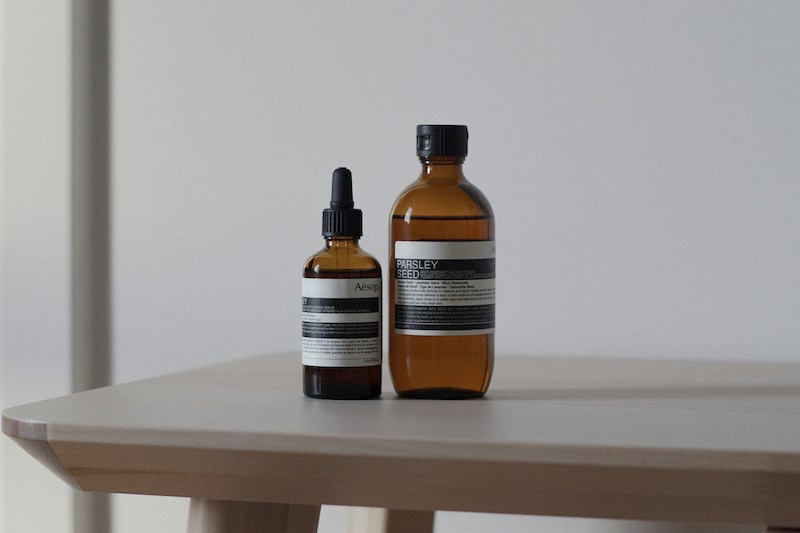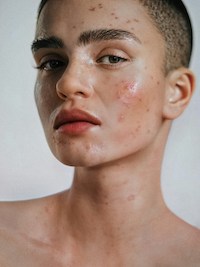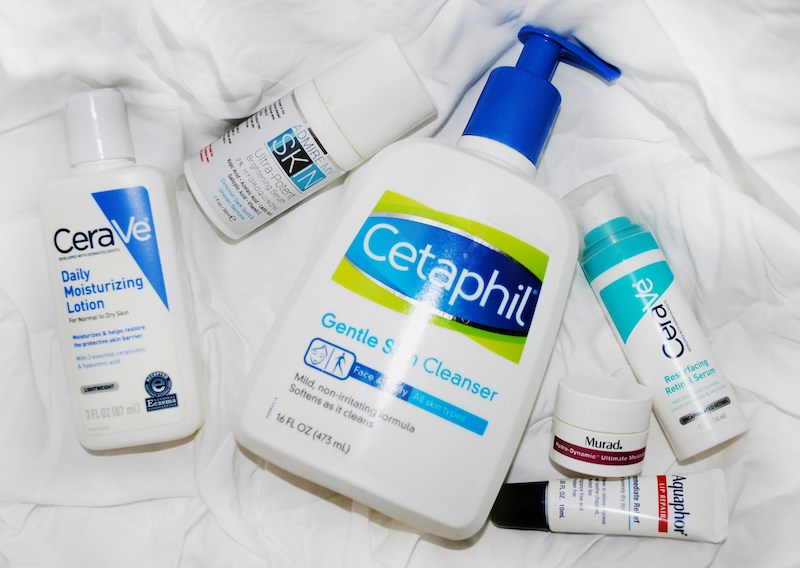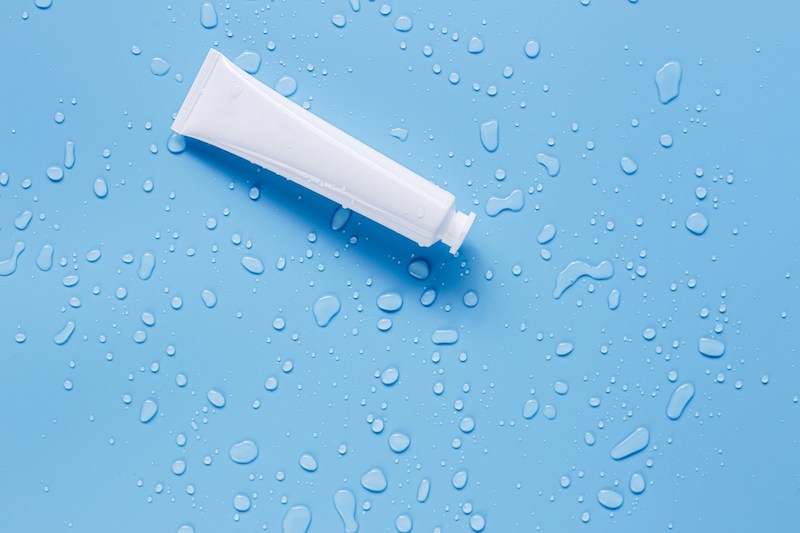If your pores often look enlarged, or your makeup seems to slide off after a few hours—you’re not alone. Oily skin is incredibly common, but without the right care, it can lead to clogged pores, breakouts, and uneven texture. One simple step that can help? A good face toner.
Toners are often misunderstood, with many thinking they’re just an extra, unnecessary step. But the right toner can actually balance oil production, remove leftover impurities after cleansing, and prep your skin for better absorption of the next products in your routine.
In this guide, we’ll cover:
-
What a toner really does (and doesn’t do)
-
Which ingredients are ideal for oily skin
-
What to avoid
-
And of course, the 10 best toners for oily skin in 2025
If you’re still unsure about what your skin needs, start with The Ultimate Skincare Guide: How to Identify Your Skin Type — knowing your skin is step one to finding products that truly work.
Best Ingredients in Toners for Oily Skin
When it comes to oily skin, ingredients matter more than fancy packaging or claims. Here’s what to look for in a toner:
1. Salicylic Acid (BHA)
-
Deeply unclogs pores
-
Controls excess sebum
-
Helps prevent breakouts
-
Ideal for oily and acne-prone skin
Want to know more about acids and how they work? Head to AHAs, BHAs, PHAs: Which One Is for You? for the full breakdown.
2. Niacinamide (Vitamin B3)
-
Regulates oil production
-
Minimizes the appearance of pores
-
Strengthens the skin barrier
3. Witch Hazel (Alcohol-Free)
-
Natural astringent
-
Calms inflammation and tightens pores
-
Must be alcohol-free to avoid irritation
4. Zinc PCA
-
Controls shine
-
Has antibacterial properties
-
Great for acne-prone oily skin
5. Green Tea or Aloe Vera
-
Soothing and antioxidant-rich
-
Help calm redness and irritation
Ingredients to Avoid in Toners (Especially for Oily Skin)
-
High alcohol content: Can strip the skin and trigger more oil production
-
Heavy oils or butters: Clog pores and worsen breakouts
-
Synthetic fragrance: Can cause irritation, especially if your skin is reactive
How to Choose the Right Toner for Your Oily Skin Type
Not all oily skin is the same — and that’s where many people go wrong when choosing a toner. To see real results, you need to match your toner to your specific oily skin subtype and concerns. Here’s how to do it:
1. Oily + Acne-Prone Skin
If you’re constantly dealing with blackheads, whiteheads, or cystic breakouts, go for a toner with salicylic acid (BHA). It helps exfoliate inside the pores, reduces oil buildup, and prevents new breakouts. Niacinamide and zinc PCA are also great for calming inflammation and keeping skin clear.
2. Oily + Sensitive Skin
If your skin gets red or stings easily, avoid harsh exfoliants or high alcohol content. Instead, look for gentle, alcohol-free toners with ingredients like green tea extract, panthenol, or aloe vera. These soothe the skin while still helping to balance oil.
3. Oily + Dehydrated Skin
Yes — oily skin can also be dehydrated! If your skin feels tight or flaky but still produces oil, you need a toner that hydrates without clogging pores. Look for glycerin, hyaluronic acid, or beta-glucan to restore moisture while keeping shine in check.
Formulation Tips
Always check the pH level of your toner — ideally around 4.5 to 5.5 to maintain skin barrier health. Toners with this pH level support a healthy microbiome and reduce irritation risk.
Still unsure what your skin needs? Start with The Ultimate Skincare Guide: How to Identify Your Skin Type to get clarity before investing in products.
Top 10 Best Face Toners for Oily Skin (2025 Edition)
Choosing the right toner can make a huge difference in how your oily skin behaves throughout the day. Here are 10 expert-approved toners that help reduce shine, unclog pores, and support a healthy skin barrier — without stripping or irritating.
1. Paula’s Choice Skin Balancing Pore-Reducing Toner
-
Lightweight, alcohol-free formula with niacinamide, chamomile, and antioxidants
-
Reduces excess oil, refines pores, and calms redness
-
Best for oily and combination skin types
-
Gentle enough for daily use without irritation
-
Price: $$
-
Where to buy: Paula’s Choice
2. COSRX AHA/BHA Clarifying Treatment Toner
-
Contains willow bark water (BHA) and apple fruit water (AHA)
-
Exfoliates dead skin, helps prevent clogged pores
-
Best for oily and acne-prone skin
-
Spray format for easy application; great for breakouts on chest/back too
-
Price: $
-
Where to buy: Amazon, YesStyle, iHerb
3. La Roche-Posay Effaclar Astringent Toner
-
Formulated with salicylic acid and LHA (Lipo-Hydroxy Acid)
-
Targets clogged pores and post-acne marks
-
Ideal for oily, acne-prone skin with texture issues
-
Dermatologist-recommended and non-comedogenic
-
Price: $$
-
Where to buy: Ulta, Target, CVS
4. The Ordinary Glycolic Acid 7% Toning Solution
-
Powered by glycolic acid (AHA) and aloe vera
-
Gently exfoliates surface buildup, improves tone and texture
-
Best for oily, dull, or rough skin (not for sensitive types)
-
Use in PM routine only; follow with SPF
-
Price: $
-
Where to buy: Sephora, Ulta, Deciem
5. Thayers Alcohol-Free Witch Hazel Toner (Unscented) (My Personal Favorite)
-
Made with witch hazel, aloe vera, and glycerin
-
Refreshes skin and controls oil naturally, without drying
-
Perfect for oily + sensitive skin types
-
Alcohol-free and fragrance-free option
-
Price: $
-
Where to buy: Amazon, Target, Walgreens
6. Krave Beauty Kale-Lalu-yAHA
-
Contains 5.25% glycolic acid, aloe, and green tea
-
Gently resurfaces while calming irritation
-
Great for oily, dehydrated, or breakout-prone skin
-
Formulated with barrier-supporting ingredients
-
Price: $$
-
Where to buy: KraveBeauty.com
7. Benton Aloe BHA Skin Toner
-
Features salicylic acid, snail mucin, and aloe
-
Combats breakouts while deeply hydrating the skin
-
Best for oily, acne-prone, and sensitive skin
-
K-beauty cult favorite with minimal irritation
-
Price: $$
-
Where to buy: YesStyle, Stylevana, Amazon
8. Pixi Glow Tonic
- Contains 5% glycolic acid, ginseng, and aloe vera
-
Brightens, smooths texture, and regulates oil
-
Ideal for oily skin with dullness or uneven tone
-
Should be used 2–4 times/week depending on skin tolerance
-
Price: $$
-
Where to buy: Target, Ulta, Cult Beauty
9. Naturium Niacinamide Acid Toner 7%
-
Combines niacinamide, PHA, and zinc PCA
-
Controls shine while gently exfoliating and strengthening the skin
-
Best for oily, blemish-prone skin types
-
Fragrance-free and pH-balanced formula
-
Price: $$
-
Where to buy: Naturium.com, Target
10. Isntree Green Tea Fresh Toner
-
Key ingredients: green tea extract, Centella Asiatica, and EGCG
-
Balances sebum, soothes inflammation, and hydrates lightly
-
Excellent for oily + sensitive or irritated skin
-
Lightweight and non-sticky — perfect for layering
-
Price: $
-
Where to buy: YesStyle, StyleKorean, Amazon
How to Use Toner Correctly in Your Routine
Using toner the right way is just as important as choosing the right one. Here’s how to get the most out of it in your skincare routine for oily skin.
When to Apply
Toner should be applied right after cleansing and before any serums or moisturizers. This step helps remove leftover impurities and preps your skin to absorb active ingredients better.
Application Tips
You can use:
-
A cotton pad to gently swipe the toner across your face — great for removing residue and mild exfoliation.
-
Clean hands to press the toner into your skin — ideal for hydrating or soothing formulas.
Both methods work; it depends on your skin’s needs and the toner’s texture.
How Often Should You Use Toner?
For most oily skin types, twice daily (morning and night) works well. If your toner contains exfoliating acids, limit it to once a day or every other day to avoid irritation.
Best Products to Combine with Toner
Pair your toner with a lightweight, oil-free moisturizer, and if you’re acne-prone, a serum with niacinamide or salicylic acid helps keep oil and breakouts in check.
Read here my guide on How To Create The Perfect Routine For You.
Mistakes To Avoid When Using Toners for Oily Skin
Even the best toner won’t help if it’s used incorrectly. Here are the most common mistakes people make — and how to avoid them.
1. Overusing Harsh Toners
Many still reach for strong, alcohol-based toners thinking they’ll “dry out” the oil. But in reality, this strips your skin barrier, triggering even more oil production. Instead, choose gentle, pH-balanced formulas that support your skin without irritation. Learn more in The Ultimate Guide to Skin Barrier Repair.
2. Layering Too Many Actives
If you’re already using a serum with acids or retinol, go easy on exfoliating toners. Overdoing it can cause redness, sensitivity, or breakouts. Always check for overlap in ingredients. Not sure how to build a balanced routine? Start with The Ultimate Guide to Building Your Personalized Skincare Routine.
3. Skipping Moisturizer
Even oily skin needs hydration. A toner is not a replacement for moisturizer. Without proper hydration, your skin may overcompensate with more oil. If you’re unsure which products to choose, check out The 10 Best Moisturizers for Sensitive Skin — many are lightweight enough for oily types too.
4. Using Toner as a Quick Fix
Toner supports your routine, but it won’t solve everything on its own. Long-term balance comes from consistency and understanding your skin. If breakouts are your main concern, read Acne 101: Causes, Treatments, and How to Get Clear Skin for a deeper look.
FAQ: Toners for Oily Skin
1. Should I use toner every day if I have oily skin?
Yes — most toners for oily skin are gentle enough for daily use, ideally morning and evening after cleansing. However, if your toner contains exfoliants like glycolic or salicylic acid, start with 3–4 times a week to avoid over-exfoliating. For more on how often to exfoliate, check out AHAs, BHAs, PHAs: Which One Is for You?.
2. Can toner replace my moisturizer?
No — a toner can balance and prep, but it doesn’t lock in moisture the way a moisturizer does. Even oily skin needs hydration to stay healthy. Choose a lightweight, oil-free moisturizer to finish your routine.
3. Are natural or DIY toners better for oily skin?
Not always. While natural ingredients like green tea and aloe can be soothing, DIY toners often have unstable pH levels or irritating ingredients (like lemon juice or apple cider vinegar). Stick with formulated products that are tested and skin-safe.
4. Can toner help with acne?
Definitely — especially if it contains salicylic acid, niacinamide, or zinc PCA. These ingredients help unclog pores, reduce inflammation, and control sebum. If acne is your main concern, read My Guide About Acne.
Works With Your Oily Skin — Not Against It
The right toner can truly change the way your skin looks and feels. Whether you’re dealing with constant shine, clogged pores, or breakouts, there’s a toner out there that fits your oily skin type and your routine.
Here’s what to keep in mind:
-
Go for ingredients like salicylic acid, niacinamide, witch hazel (alcohol-free), and zinc PCA
-
Match your toner to your oily skin subtype — acne-prone, sensitive, or dehydrated
-
Use it consistently, but not excessively
-
Always follow with a proper moisturizer and SPF
Try one product, give it a few weeks, and track how your skin reacts.
Let’s Stay Connected
If you found this guide helpful, share it on Pinterest or save it for later — skincare is a journey, and the right information makes all the difference.
Want more expert tips, product breakdowns, and myth-busting straight to your inbox?
Join our newsletter and get exclusive skincare content, personal recommendations, and clean science-based advice — no fluff, no noise.
You can also follow us on Pinterest for daily skincare tips, infographics, and routines tailored to your skin type.
Let’s build your glow — one simple, smart step at a time.
Your Skincare. Simply Done








